The Story of Culture and Arts
- Image resource of Korean history
- Documents from History TextBooks
- Culture & Art Stories from Korean History
- Culture & Art Stories from Korean History - Korean
- National Institute of Korean History
- History net
- About the site
- Introduce
-
Numerous topics related to Korean culture and art are mentioned in middle and high school national history textbooks, but most of them are briefly described by era, making it difficult to understand their concepts, transition processes, and characteristics.
<Culture & Art Stories from Korean History> produces and provides video materials based on expert commentary on the flow, change process, characteristics and characteristics of each major topic in the field of culture and art in Korean history.

Scenario
Gyeongbokgung Palace was completed in 1395, in the 4thyearofKingTaejo’sreign.
Geunjeongjeon Hall, which is situated at the center of the palace, is the most important building in terms of historical and cultural value.
However, have you ever looked closely at the roof tiles of Geunjeongjeon Hall?
Korean roof tiles add the finishing touches to the building, and they are a great example of the beauty of lines.
Roof tiles, an exemplar of the beauty of lines
Roof tiles originated in China and were first used in Korea during the Three Kingdoms period. However, roof tiles were not installed in all buildings in the early days.
The role of roof tiles in its early days
Development of construction and roof tile manufacturing technology was needed in order to install the roof tiles on the roof.
This is why roof tiles were more than just construction materials. They came to represent the refinement and elegance of the building.
In the early days, roof tiles were used only in important buildings such as palaces and government buildings, religious buildings such as temples and structures relevant to ancestral rites.
Changes in roof tiles
Nangnang roof tiles influenced the roof tiles of Goguryeo and Baekje. They were directly responsible for the appearance of tile-roofed buildings in Korea.
Types of roof tiles
-Convex roof tile
Shaped like a cylinder cut in half, placed between concave roof tiles to form the ridges
- Concave roof tiles
Rectangular-shaped roof tile laid on the roof with its inner side facing outside to form furrows
- Convex antefix
A convex roof tile attached with hangings that are used at the edge of the roof.
Been in use from the Three Kingdoms period to the Joseon Dynasty.
Decorated in various patterns such as lotus flowers.
- Concave antefix
Concave roof tile attached with oblong hanging that slightly curves upward.
Manufactured and used from the late Baekje period to the Unified Silla period.
Various patterns including rinceau pattern
Lotus flowers never lose their elegance even when they’re covered in mud.
After the spread of Buddhism, lotus flowers were often featured in various historic sites and artifacts. From this, we can tell that lotus flowers were important to Koreans.
Roof tiles were no exception.
A leading example is the lotus-patterned convex antefix from the Generals’ Tombs from the Goguryeo period.
Roof tiles per period – Goguryeo
- Generals’ Tombs
Lotus flower in raised design
- Convex antefix
Small protruding dots placed on either side of lotus flower petals.
Pattern often used since the ancient times for its beauty and as a symbol of nobility.
| Characteristics of roof tiles from Goguryeo -Roof tiles from before the transfer of the capital and after the transfer show slight differences -Cirrous-patterned convex antefix was mainly produced in the early days but gradually, the lotus pattern became the most popular. -Goguryeo lotus-patterned convex antefix characterized by embossed flower buds within the borders - Later on, the lotus pattern became simple and the size of a ginkgo nut. It was often used together with patterns such as the lower medallion motif and animal face motif. |
Roof tiles per period – Baekje
-Hanseong period
Flowering plant-patterned convex antefix – Coin-patterned convex antefix excavated from Pungnaptoseong Fortress Shinwoo tenement housing and Zone 1
Pungnaptoseong Fortress lotus-patterned antefix – Excavated from Pungnaptoseong 197 Area
-Ungjin period
Lotus-patterned convex antefix – Daetongsa Temple site in Gongju
Features a pattern of lotus flower with 8 petals that are slightly raised at the end and ovaries
-Sabi period
Convex antefix
The Baekje Dynasty went through the Hanseong and Ungjin periods, then reached the Sabi period.
The roof tile we should take note of is from the Sabi period.
- Mireuksa Temple site of Iksan
Green glazed rafter-end tile from the Sabi period excavated from Mireuksa Temple site in Iksan.
Rafter-end tile coated with green glaze excavated.
7-petaled lotus flower-patterned decoration.
Beautifully decorated with honeysuckle leaves engraved within the lotus flower pattern.
Roof tiles per period – Silla
Lotus-patterned convex antefix – Excavated in Wolseong
Lotus-patterned convex antefix – Excavated in Anapji Pond, Wolseong
Roof tiles per period – Unified Silla
A leading example of a roof tile from the Unified Silla period.
Compound petal-patterned convex antefix, arabesque patterned convex antefix, arabesque patterned concave antefix.
Various patterns such as floral medallion, flowering plants, arabesque, auspicious bird, mystical creatures, lions and devils made an appearance in the Unified Silla period in addition to the lotus flower pattern.
Became more decorative and lavish compared to the floral medallion pattern from the Goguryeo period.
Arabesque pattern came to be used widely and not only on convex antefixes, but also on concave antefixes and various artifacts.
Bird-patterned convex antefix (Excavated from Yeongmyosa Temple site).
Pair of birds-patterned convex antefix (Excavated from Gameunsa Temple site).
Ancient people believed that birds were messengers that connected heaven and earth.
| Characteristics of roof tiles from Silla - Produced tiles later than Goguryeo and Baekje around the late 5thcenturyorearly6thcentury - Was influenced by Baekje and Goguryeo at first, but gradually began producing roof tiles with unique patterns and shapes - Advances are made in roof tiles. Patterns become more glamorous in the Unified Silla period and new patterns such as the floral medallion and arabesque appear. - Lotus flower patterns with compound petals became popular. - Use of diverse patterns became popular with each temple and temple building featuring different roof tile patterns. |
Roof tiles per period – Goryeo Dynasty
Leading example of roof tiles from Goryeo
Devil eye-patterned convex antefix (Excavated from Haeeumjeon, Paju).
Sanskrit-patterned convex and concave antefixes (Mireuksa Temple site, Chungju).
Celadon convex antefix with embossed peony pattern (Excavation site unknown).
Roof tiles per period – Joseon Dynasty
Devil eye and fine writing-patterned concave antefix (Excavation site unknown).
Concave antefix for the ridge with human face pattern (Excavation site unknown).
Dragon-patterned concave antefix (Excavation site unknown).
Dragon-patterned convex antefix with blue glaze (Gyotaejeon Hall, Gyeongbokgung Palace).
Roof tiles that were not only functional but also symbolic gradually lost its symbolic aspect and became purely functional in the Goryeo and Joseon Dynasties. Roof tiles also became widespread during this period.
Korean ancestors must have enjoyed the sound of rain falling on the roof just like we do now.
The scenery must have looked fantastic as rain fell upon the beautifully decorated roof tiles.
It would be beneficial if you gained an understanding of what roof tiles meant to Korean ancestors.
-------------------------------------
Script advisor: Lee Byeong-ho
Scenario composition: Ahn Hyeon-jin, Kim Min-sang
Voice actor: Oh Soo-gyeong
MC: Ju Hye-bin, Hwang Ba-ul
Illustration: Lee Kwang-i
Research material support: National Museum of Korea, Gyeongju National Museum, Cultural Heritage Administration, Hanseong Baekje Museum, E-Museum
Director: Kim Hyeong-woo, Lee Hyeok-roh, Lee Yeon-sik
Planning and Production: Arirang TV Media
Architecture
17 films-
 Dosan Seowon & Byeongsan Seowon03:56
Dosan Seowon & Byeongsan Seowon03:56 -
 Dosi Hanok (City Hanok)03:51
Dosi Hanok (City Hanok)03:51 -
 Soswaewon03:43
Soswaewon03:43 -
 Suwon Hwaseong Fortress03:57
Suwon Hwaseong Fortress03:57 -
 Hanok06:40
Hanok06:40 -
 Fortresses - walled towns in Korea09:15
Fortresses - walled towns in Korea09:15 -
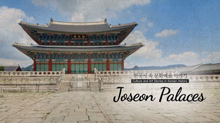 Joseon Palaces08:46
Joseon Palaces08:46 -
 Korean Gardens08:34
Korean Gardens08:34 -
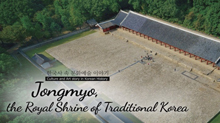 Jongmyo, the Royal Shrine of Traditional Korea09:05
Jongmyo, the Royal Shrine of Traditional Korea09:05 -
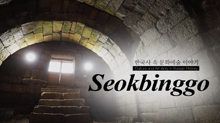 Seokbinggo, or Stone Ice Storage08:18
Seokbinggo, or Stone Ice Storage08:18 -
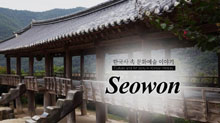 Seowon, a Neo-Confucian Academy08:22
Seowon, a Neo-Confucian Academy08:22 -
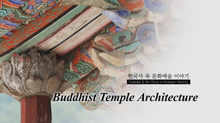 Buddhist Temple Architecture08:28
Buddhist Temple Architecture08:28 -
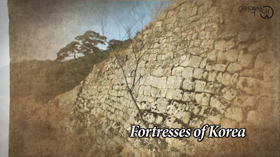 Fortresses of Korea09:12
Fortresses of Korea09:12 -
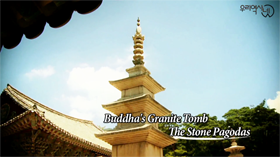 Stone Pagodas07:13
Stone Pagodas07:13 -
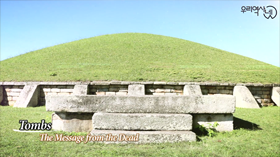 Tombs09:36
Tombs09:36 -
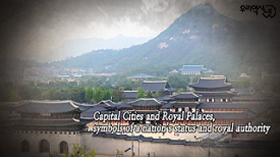 Capital Cities and Royal Palaces08:55
Capital Cities and Royal Palaces08:55 -
 Roof Tiles07:48
Roof Tiles07:48

